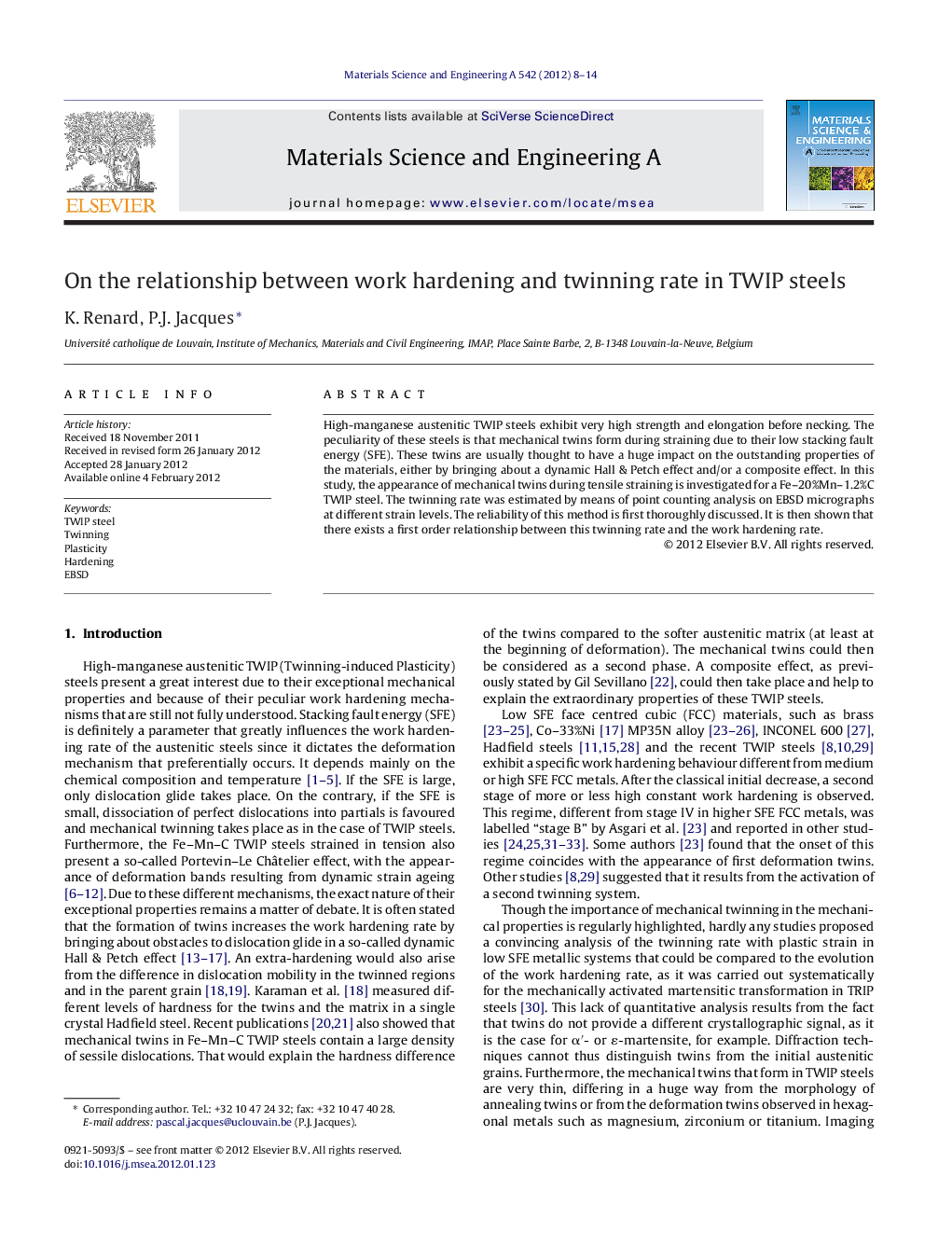| Article ID | Journal | Published Year | Pages | File Type |
|---|---|---|---|---|
| 1577313 | Materials Science and Engineering: A | 2012 | 7 Pages |
High-manganese austenitic TWIP steels exhibit very high strength and elongation before necking. The peculiarity of these steels is that mechanical twins form during straining due to their low stacking fault energy (SFE). These twins are usually thought to have a huge impact on the outstanding properties of the materials, either by bringing about a dynamic Hall & Petch effect and/or a composite effect. In this study, the appearance of mechanical twins during tensile straining is investigated for a Fe–20%Mn–1.2%C TWIP steel. The twinning rate was estimated by means of point counting analysis on EBSD micrographs at different strain levels. The reliability of this method is first thoroughly discussed. It is then shown that there exists a first order relationship between this twinning rate and the work hardening rate.
► A point counting procedure has been developed and validated for the determination of the twinning rate in TWIP steels. ► Both the twin volume fraction and the fraction of twinned grains saturate after a well defined level of strain. ► A clear correlation between the stages of twinning rate and work hardening rate is established.
